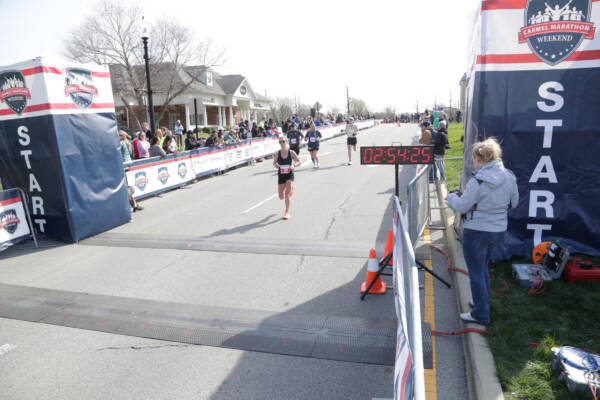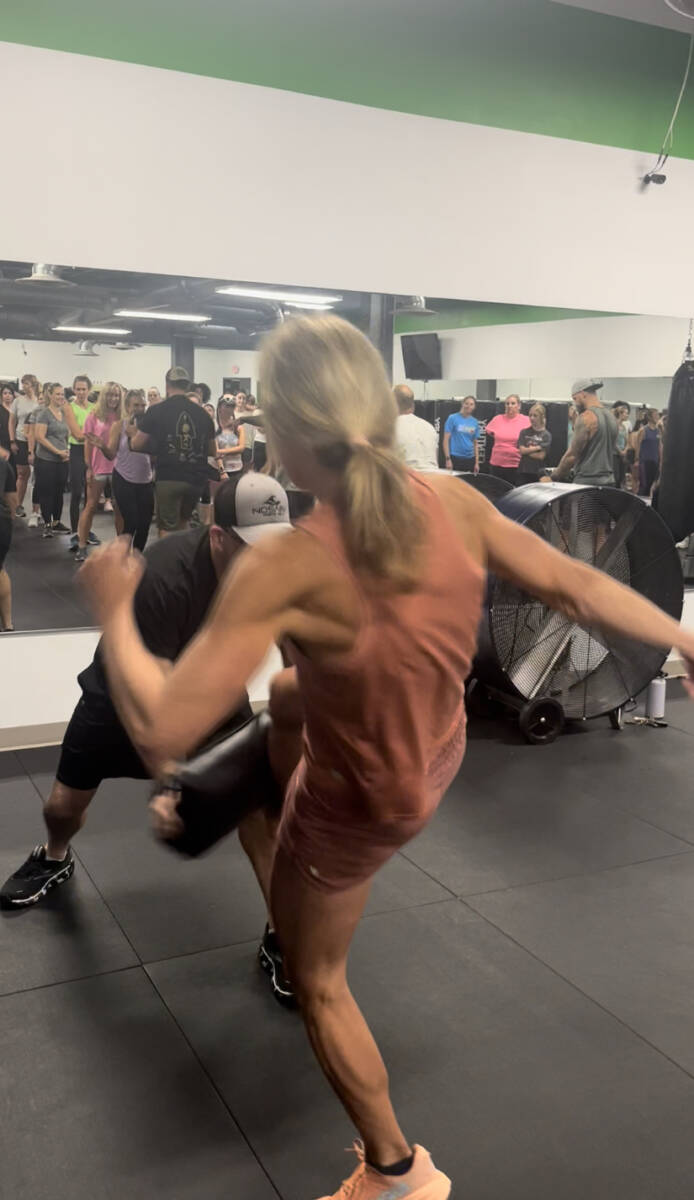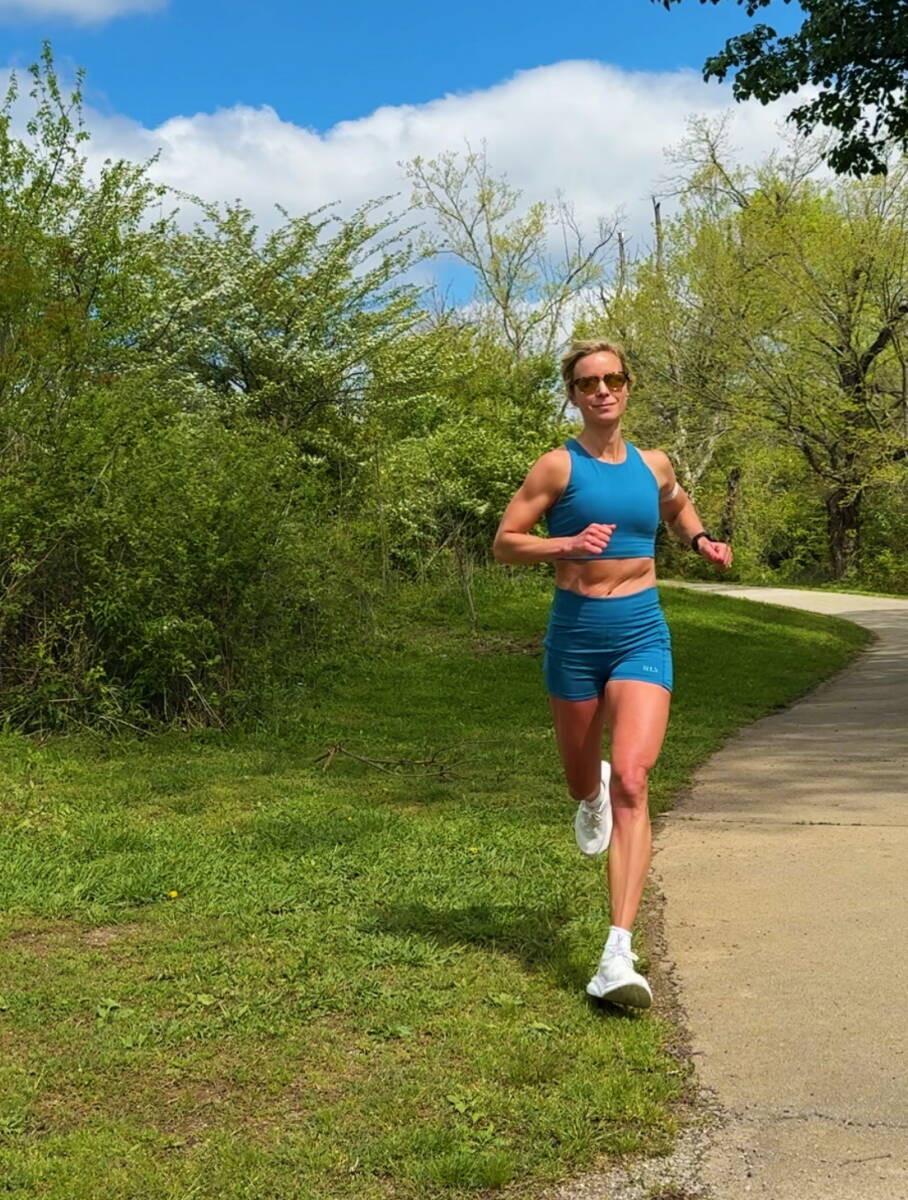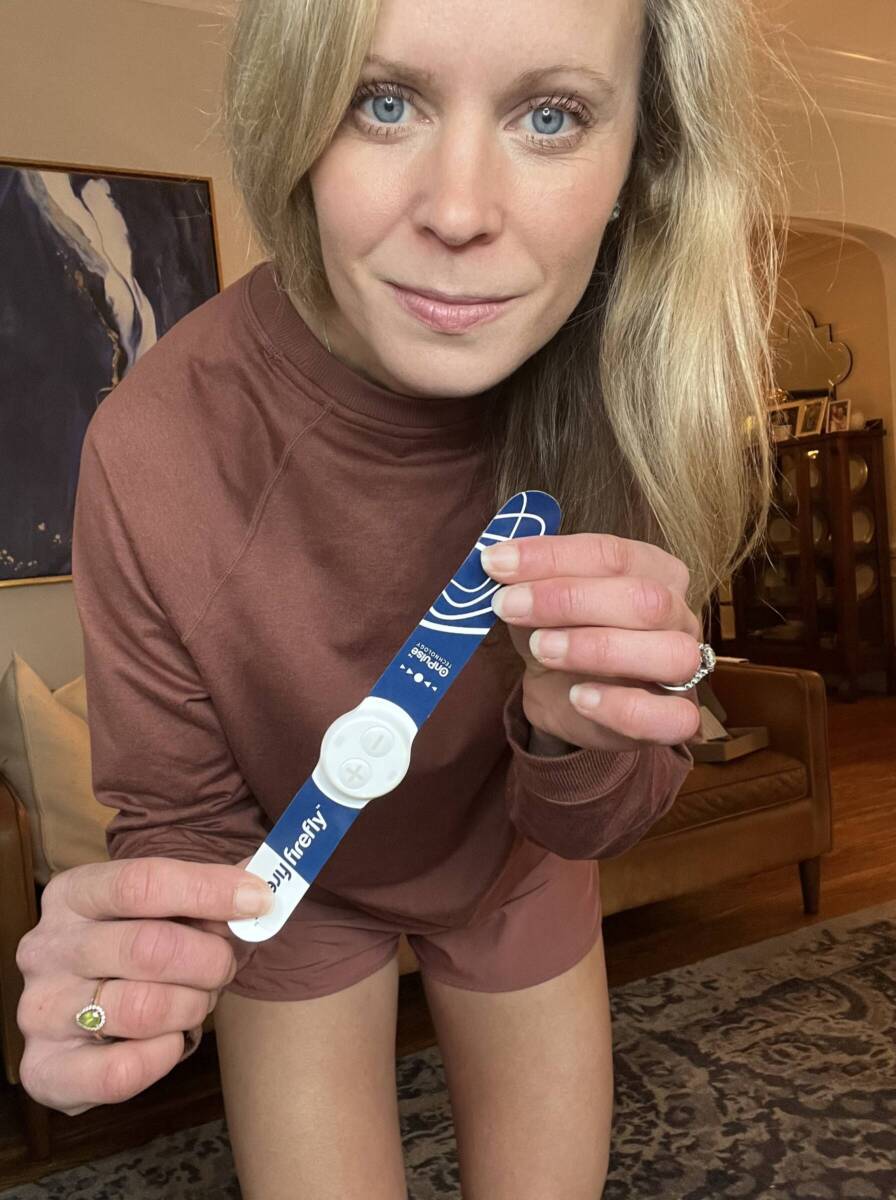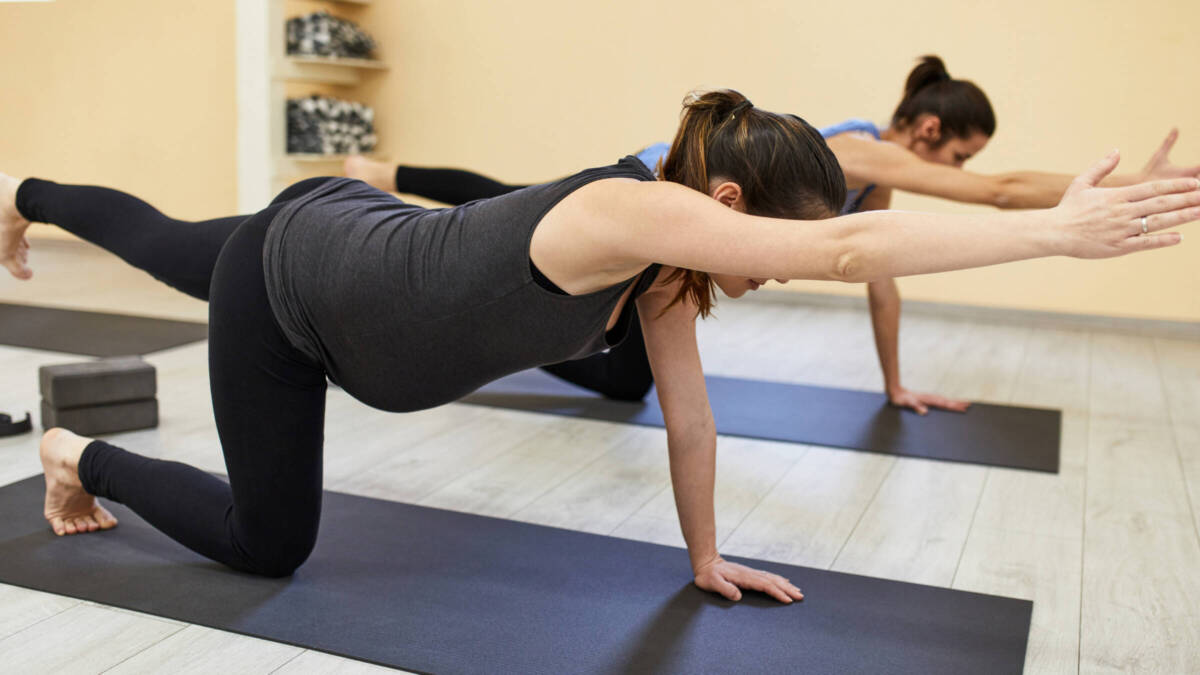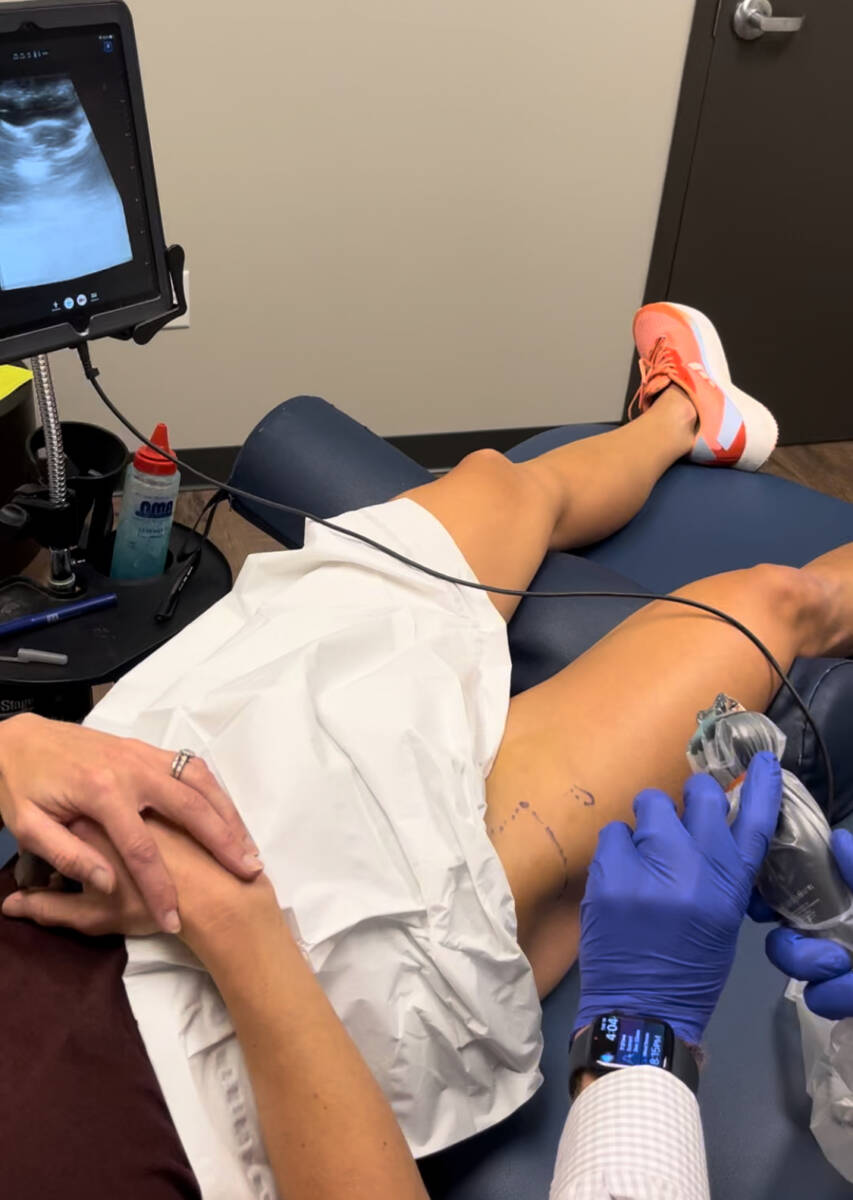How I Stopped Being an Injury Prone Runner
13 Tips for Injury Prone Runners
Here are 13 small actions that helped me stop being an injury-prone runner.
Do toe yoga.
Our feet bear the brunt of our running. Up to five times our body weight can be pushed upon the tiny 26 bones and more than 100 muscles, ligaments, and tendons that work together to propel us forward.
Still, we often forget about our feet—paying closer attention to things like our hips, glutes, hamstrings, and quads. If there is a weakness or imbalance in our feet, it can cause pain up the chain in those areas not to mention an inefficient stride.
I struggled with metatarsal pain for more than a decade. I was told nothing would help except maybe fat pad injections because the theory was that I had pain due to the fat pad atrophy in my feet after years of running.
But they were wrong. When I started regularly doing toe yoga to help heal my torn plantar fascia, the foot strengthening fixed my metatarsalgia. Now, I recommend it doing the toe yoga exercise to all my athletes.
It takes practice and mental concentration, but it pays off big time. To do it, have your feet flat on the floor. Then lift your big toe up separate from your little toes. Put it down, then lift your little toes up, separate from your big toe. Repeat 30 times. I do this at least once per day as part of my warm-up, in the shower, and while brushing my teeth. Don’t forget your feet!
Wear proper footwear all the time!
I started wearing OOFOs when I tore my plantar fascia because that was the only shoe I could comfortably walk in. Now, I wear them all the time even after I’m healed because I feel a HUGE difference in how my body feels when I wear them.
My legs and feet feel fully recovered for the next workout or long run. Studies support that recovery shoes like OOFOs help recovery. In fact, when I haven’t worn them, I’ve had little aches and pains crop up.
I also stick to the running shoe that works for me—no wandering eye! I love my HOKA Rincons. They are cushioned and light, and kind to my body. Any time I mess with my daily trainer, something ends up hurting—so I am staying loyal.
I also have found that ensuring I don’t have too many miles on my shoes keeps me from having niggles.
Prioritize sleep!
Lack of sleep is one of the biggest obstacles for me as a runner and mother. My kids are not the best sleepers and like me to lay with them until they fall asleep—and often have wake-ups in the night.
It is improving, thank goodness! But I realized that my injury cycle started when I was running more (upper 90 miles per week) and sleeping less (lots of wake-ups and less than 7 hours a night).
Sleep is crucial for recovery. Now, I pay attention to how I am feeling. If I need to rest or nap, I do it any chance I get—even if that means being teased by my husband. I am someone who falls apart if I get less than 7 hours of sleep for more than one night in a row.
So, I prioritize it as much as I can. If I have to wake up early to train, then I do my best to carve out time to lie down later.
Strength train!
Yes, yes, you’ve heard time and again that strength training is important for runners. And, you probably feel daunted by it. I know I did! But I will tell you that strength training has helped my body feel so much more powerful, resilient, and strong while running.
My fatigue resistance in my legs is much higher and I feel more power in my stride. I aim to do 30 minutes most days of some sort of strength work—light or heavy—either as injury prevention or performance enhancement. It’s nothing fancy at all. I would like to have the time to get with a strength coach, but I don’t.
But I will tell you the one single move that I think has helped me the most—heavy squats.
Most runners have weak glutes. Heavy squats rectify this—giving you more power and endurance in your stride. So, if you have time to do one move, do heavy squats two times a week 3-4 times 8-10, and you’ll see what I mean!
Eat real food.
For a long time, I used protein powders and protein bars as a quick way to get nutrition. When I would finish a long run, I would make a big smoothie. But I would be left still feeling hungry and exhausted. This was especially true when I was running close to a hundred miles a week.
So when I come home from a long run (depending on how much time I have before we jet off to one of my kids’ sporting events), I am eating eggs and avocado toast or a peanut butter bagel with a banana and yogurt within 30 minutes of getting home. Then I am eating another real meal about two hours later.
My husband is a vegetarian so we don’t eat a lot of meat. However, I am chronically low in ferritin. So, now, if we go out to eat and a hamburger is on the menu, I eat that.
I have found that I recover faster, feel more energized, and just feel better when I eat real food instead of drink mixes and bars.
The same is also true for fueling during my runs. Any run longer than 10 miles or any workout with a hard effort, I fuel–and recover so much faster.
Real food and proper fueling satiate me and energize me so I can be a better mom, runner, wife, and person.
Take high-quality supplements.
Still, even with proper nutrition, I still battle nutrient deficiencies—a lot of us do! For this reason, I fill in the blanks with Previnex supplements which are, well, top-notch. The ingredients, blends, and manufacturing of these supplements are held to the highest standards.
Since taking them, my blood panel results have gone back to optimal ranges (minus Ferritin which Previnex does not make a supplement for. I take Mega Foods’ Blood Builder for that). My energy is better and I don’t get random days of stomach issues and lethargy (likely due to the probiotic).
Own rest days.
I tried training 7 days a week and it wasn’t for me. So, I own my rest days—which are Sundays. I do yoga, foam roll, take an Epsom salt bath, or nothing at all. And I allow this day to be a total reset for my body and the work it has put in.
And I don’t care that most others running at my level run 7 days a week. I know that I need this day physically and mentally to be ready for the week ahead.=
There has also been a time or two in my current marathon training cycle that I took an extra rest day because I felt a potential injury budding.
This was a huge win for me because I used to fear rest days as momentum thieves. But now I know they give my body what it needs to build back stronger and be ready to work harder.
Listening to your body is inherent in this—trust your body to tell you what it needs.
Run easy most days!
Easy running is not a pace, it’s a feeling. Too many runners get caught up in what their easy pace should be—wanting it to be faster. I was one of them. I thought I would be caught dead if I ran over a certain pace.
Now, I don’t ever look at my Garmin for easy runs—I run what feels good for my body. And as my training intensity has increased, this easy pace also increased because my body needs more recovery.
The goal is to be consistent and build fitness—not be a workout hero and have people look at my Strava and judge me paced on my easy run paces.
Easy runs are amazing because they help you recover faster while also building fitness. Don’t make life harder than it has to be by running these runs (about 80 percent of your total weekly volume) too fast. This will only make you slower or injured in the long run because it doesn’t allow your body to build back up to full strength.
Easy should feel comfortable, conversational, controlled, and ENERGIZING. You should not finish an easy run feeling gassed and happy the run is over. That means you’re going too fast.
Trust the training.
You have to buy into the process to feel confident. I had doubts in the past. Doubts about my training led to doubts about my fitness. Early on in this training cycle, I started to get hungry for more miles, faster paces. My coach held me steady. “We are seeing sharpening here,” he explained. And he was right.
I was progressing while still feeling fresh. I had thought I had to run high mileage and feel tired all the time to get faster. That’s not the way it should be. Sure, others may benefit from running lots of miles. But for me, I need amplified recovery. I need cautious splits.
Finding my magic mileage (in the mid-60s for this marathon cycle) has been key as an injury-prone runner. Realizing that what works for others may not work for me—and knowing that more isn’t always better has been so important.
So, I trust my coach and stick to my training plan. I don’t add miles or quicken paces. I don’t look at what others are doing and wonder if I should do it, too. I trust my coach and the training, and my body to respond to the best of its capabilities.
Never skip a warm-up.
Gone are the days of rolling out of bed and putting on my running shoes. I am sure to take 5 minutes to do some dynamic stretches, my toe yoga, cobra push-ups, and down dogs to get my body ready to work.
Getting the joints loose and blood flowing with a warm-up is key to any runner, injury-prone or not, to staying healthy and performing their best.
Think of yourself as a car in the winter. It needs a few minutes to get the juices flowing to warm up. Your body is no different. And it seriously takes less than 5 minutes to do some leg swings and air squats!
Get a regular massage.
One of my main secret weapons to not being an injury-prone runner is regular massage. Every runner must find the right recovery tool or therapy for their body. And this method may change depending on their body or training cycle.
I have ALWAYS loved massages and it turns out, my body knows what it needs. I found an incredible neuromuscular massage therapist named Sandra. And my body responds incredibly well to her massage.
I see Sandra once a week for 30 minutes. I am in and out in just over a half hour, and she keeps budding injuries at bay. (She’s also just an overall awesome person). Being a runner requires maintenance (again, let’s invoke that car analogy). Find what therapy works for you and do it, no apologies.
I am sure some people may read this and think this is unrealistic or even indulgent. But if taking less than an hour a week can keep me running pain-free, avoiding time off and expensive physical therapy and doctors’ bills later—I’m going to do it.
What’s amazing is I don’t have to face unpredictable insurance bills. AND! It’s actually enjoyable and good for my mind too. No enduring painful injections or cupping or needling. Just getting my muscles worked and the blood flowing.
Create a mobility habit.
I’ve also said I wanted to get a regular massage and make yoga a part of my life. After so much time off running, I decided to stop wishing and doing.
So along with getting regular sports massages, I also do yoga and mobility work regularly.
This may look like my kids crawling all over me while I do my own hip opening routine, moving through some Peloton yoga (for runners, yin, slow flow, or recovery), or practicing it with my neighbors who hold a session every Sunday in their backyards.
I have found doing regular yoga moves helps keep my joints mobile and reset my muscles. I don’t lengthen too much (not great for runners) but doing some periodic light stretching does keep my muscles from getting tight spots and my joints lubricated.
Mobility is key for running performance and doing a light yoga routine (like when your kids are bathing) plus some easy foam rolling can be just what your body needs to recover for the next day.
Again, find what works for you and try to fold it into your regular routine.
Garner the right mindset.
Being an injury-prone runner for so long helped me overhaul my mindset. My training is no longer about anyone else—it is about ME. As a mom, having something just for yourself is important. Sure, our running inspires our kids and teaches them important life lessons.
But when we get out there, it’s about making ourselves happier, balanced, and refreshed so we can go out and be our best everywhere else.Before getting hurt, I focused on others’ training—their volume, their paces—and that negatively impacted my relationship with running. It filled me with doubt and robbed my happiness.
Now, I make an effort to only worry about what I AM DOING. I know comparison is the thief of joy. So I do what is best for me.
FAQs about Running Injuries
Is running an injury prone sport?
Yes, running is an injury-prone sport with about 8 in 10 runners suffering an injury. Why? Running is a high-impact repetitive activity. If you have a muscle imbalance or weakness, the repetition of running miles upon miles will eventually cause irritation or break at or around the imbalance or weakness.
What is the most common injury for runners?
The most common running-related injuries include medial tibial stress syndrome, Achilles tendinopathy, plantar fasciitis, patellar tendinopathy, iliotibial band syndrome, tibial stress fractures, and patellofemoral pain syndrome.
Why are some runners more injury prone?
There are several factors that can make a runner injury prone including genetics, biomechanics, training and lifestyle:
Some are more injury prone than others because of genetics that predisposes them to injuries such as weak bones or tissues. It’s also very normal to have a muscle imbalance in which one muscle is stronger or tighter than the other, which throws off your gait and can lead to an overuse injury.
The biomechanics of someone’s running stride can also put too much stress on a body part, leading to a runner injury.
Training can also impact injury risk. If you run too much too soon or skip rest days when your body needs them, the cumulative effect will result in a break. Lifestyle can also impact if you are an injury-prone runner. For example, if you do not fuel well enough, your body will not have the nutrients it needs to recover well for your next run.
Working with a running coach such as myself may be able to help you stay on top of the little things and run what’s best for you!
Have you struggled with running injuries?
Six weeks after starting The Mother Runners, I got injured. I tore my hamstring in a marathon build-up with the goal of qualifying for the Olympic Trials Marathon. I trained and raced with my hurt leg because I wanted to shoot my shot. I took more than a year off to recover. Then about a month into running, I got injured again—this time with a torn plantar fascia. About a year after that, I torn my hip labrum. Soon my identity went from mother runner to injury prone runner.
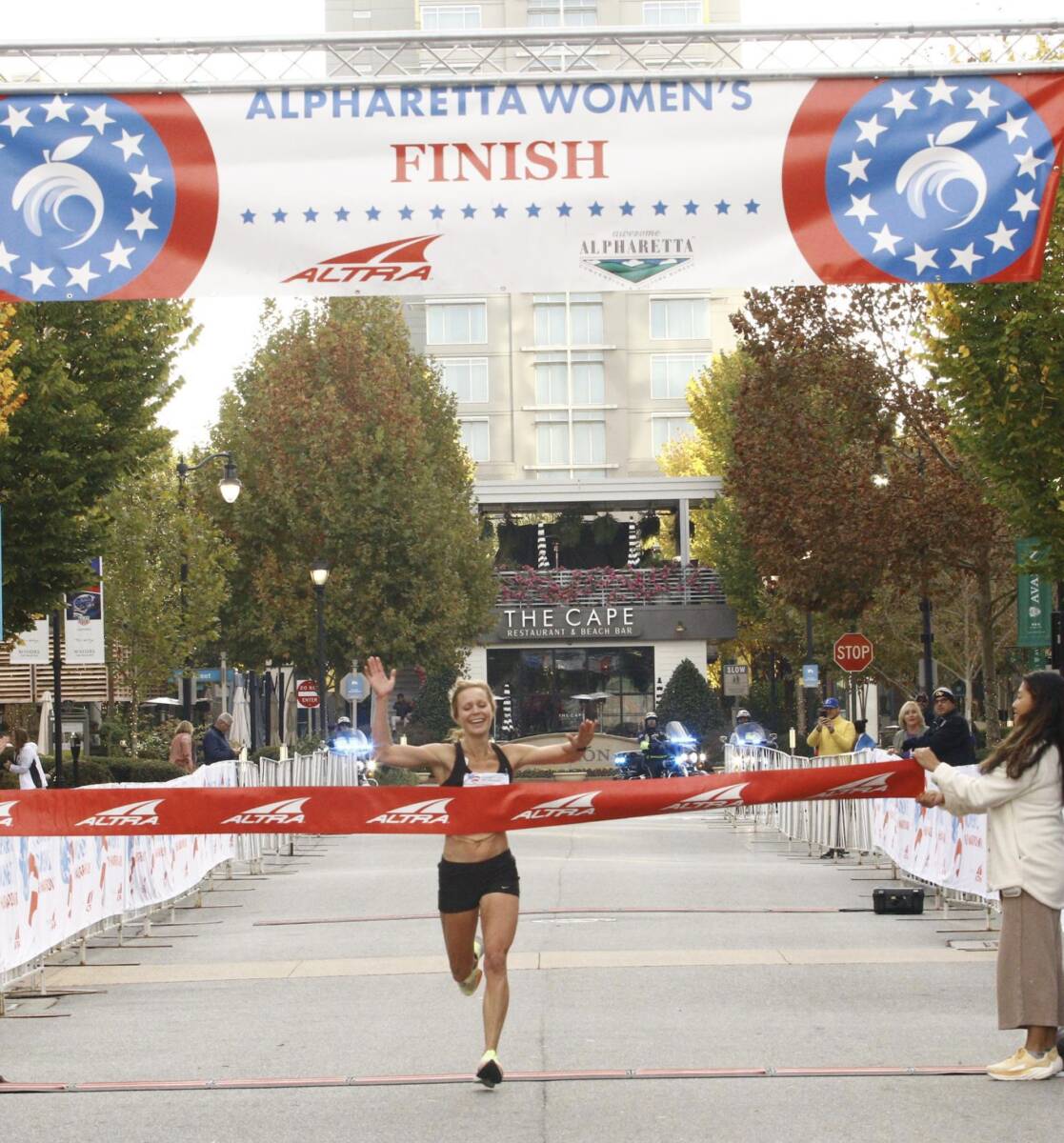
In retrospect, it was a combination of bad luck and bad mistakes which have since turned into wonderful opportunities for becoming a stronger, healthier, and happier runner.
For example, I realized I wasn’t sleeping or eating well enough to support my high mileage weeks. I also learned that I made mistakes based on fear—e.g. not wanting to take an extra rest day when my hamstring felt overly tight.
Runners get injured. That’s a fact. It’s almost as certain as death and taxes. Most of the time it’s not our fault—even though we like to blame ourselves. I surely did.
But running is a repetitive, high-impact sport where even the tiniest error can lead to a big running injury over time.
My comeback to running
After several years of being stuck in a cycle of running injuries, I returned. I started running in May of 2022, slowly rebuilding, and toed the line at California International Marathon healthy, running my second fastest marathon ever.
In my marathon build-up, I set a half marathon PR of 1:20, won a half marathon, and set a mile PR (5:16) twice at the end of a mile repeat workouts in the middle of my marathon cycle. Four months later after just 10 months of rebuilding my running, I set a marathon PR of 2:54 (while sick with a fever). All at the age of 41 after 2.5 years off from running.
To say I’ve learned a thing or two about how to go from injury-prone runner to healthy is an understatement.
Indeed, I can think of at least 13 lessons I’ve learned. I’m sharing them below in hopes they help you become a happier, HEALTHIER runner. Why? Because, when our running makes us feel good, that makes us be better in everything else we do, including being moms.
So, let’s go!
13 Tips for Injury Prone Runners
Here are 13 small actions that helped me stop being an injury prone runner.
Related: How to Adjust Your Running Schedule for Time Off
Do toe yoga.
Our feet bear the brunt of our running. Up to five times our body weight can be pushed upon the tiny 26 bones and more than 100 muscles, ligaments, and tendons that work together to propel us forward.
Still, we often forget about our feet—paying closer attention to things like our hips, glutes, hamstrings, and quads. If there is a weakness or imbalance in our feet, it can cause pain up the chain in those areas not to mention an inefficient stride.
I struggled with metatarsal pain for more than a decade. I was told nothing would help except maybe fat pad injections because the theory was that I had pain due to the fat pad atrophy in my feet after years of running.
But they were wrong. When I started regularly doing toe yoga to help heal my torn plantar fascia, the foot strengthening fixed my metatarsalgia. Now, I recommend it doing the toe yoga exercise to all my athletes.
It takes practice and mental concentration, but it pays off big time. To do it, have your feet flat on the floor. Then lift your big toe up separate from your little toes. Put it down, then lift your little toes up, separate from your big toe. Repeat 30 times. I do this at least once per day as part of my warm-up, in the shower, and while brushing my teeth. Don’t forget your feet!
Wear proper footwear all the time!
I started wearing OOFOs when I tore my plantar fascia because that was the only shoe I could comfortably walk in. Now, I wear them all the time even after I’m healed because I feel a HUGE difference in how my body feels when I wear them.
My legs and feet feel fully recovered for the next workout or long run. Studies support that recovery shoes like OOFOs help recovery. In fact, when I haven’t worn them, I’ve had little aches and pains crop up.
I also stick to the running shoe that works for me—no wandering eye! I love my HOKA Rincons. They are cushioned and light, and kind to my body. Any time I mess with my daily trainer, something ends up hurting—so I am staying loyal.
I also have found that ensuring I don’t have too many miles on my shoes keeps me from having niggles.
Prioritize sleep!
Lack of sleep is one of the biggest obstacles for me as a runner and mother. My kids are not the best sleepers and like me to lay with them until they fall asleep—and often have wake-ups in the night.
It is improving, thank goodness! But I realized that my injury cycle started when I was running more (upper 90 miles per week) and sleeping less (lots of wake-ups and less than 7 hours a night).
Sleep is crucial for recovery. Now, I pay attention to how I am feeling. If I need to rest or nap, I do it any chance I get—even if that means being teased by my husband. I am someone who falls apart if I get less than 7 hours of sleep for more than one night in a row.
So, I prioritize it as much as I can. If I have to wake up early to train, then I do my best to carve out time to lie down later.
Strength train!
Yes, yes, you’ve heard time and again that strength training is important for runners. And, you probably feel daunted by it. I know I did! But I will tell you that strength training has helped my body feel so much more powerful, resilient, and strong while running.
My fatigue resistance in my legs is much higher and I feel more power in my stride. I aim to do 30 minutes most days of some sort of strength work—light or heavy—either as injury prevention or performance enhancement. It’s nothing fancy at all. I would like to have the time to get with a strength coach, but I don’t.
But I will tell you the one single move that I think has helped me the most—heavy squats.
Most runners have weak glutes. Heavy squats rectify this—giving you more power and endurance in your stride. So, if you have time to do one move, do heavy squats two times a week 3-4 times 8-10, and you’ll see what I mean!
Eat real food.
For a long time, I used protein powders and protein bars as a quick way to get nutrition. When I would finish a long run, I would make a big smoothie. But I would be left still feeling hungry and exhausted. This was especially true when I was running close to a hundred miles a week.
So when I come home from a long run (depending on how much time I have before we jet off to one of my kids’ sporting events), I am eating eggs and avocado toast or a peanut butter bagel with a banana and yogurt within 30 minutes of getting home. Then I am eating another real meal about two hours later.
My husband is a vegetarian so we don’t eat a lot of meat. However, I am chronically low in ferritin. So, now, if we go out to eat and a hamburger is on the menu, I eat that.
I have found that I recover faster, feel more energized, and just feel better when I eat real food instead of drink mixes and bars.
The same is also true for fueling during my runs. Any run longer than 10 miles or any workout with a hard effort, I fuel–and recover so much faster.
Real food and proper fueling satiate me and energize me so I can be a better mom, runner, wife, and person.
Take high-quality supplements.
Still, even with proper nutrition, I still battle nutrient deficiencies—a lot of us do! For this reason, I fill in the blanks with Previnex supplements which are, well, top-notch. The ingredients, blends, and manufacturing of these supplements are held to the highest standards.
Since taking them, my blood panel results have gone back to optimal ranges (minus Ferritin which Previnex does not make a supplement for. I take Mega Foods’ Blood Builder for that). My energy is better and I don’t get random days of stomach issues and lethargy (likely due to the probiotic).
Own rest days.
I tried training 7 days a week and it wasn’t for me. So, I own my rest days—which are Sundays. I do yoga, foam roll, take an Epsom salt bath, or nothing at all. And I allow this day to be a total reset for my body and the work it has put in.
And I don’t care that most others running at my level run 7 days a week. I know that I need this day physically and mentally to be ready for the week ahead.=
There has also been a time or two in my current marathon training cycle that I took an extra rest day because I felt a potential injury budding.
This was a huge win for me because I used to fear rest days as momentum thieves. But now I know they give my body what it needs to build back stronger and be ready to work harder.
Listening to your body is inherent in this—trust your body to tell you what it needs.
Run easy most days!
Easy running is not a pace, it’s a feeling. Too many runners get caught up in what their easy pace should be—wanting it to be faster. I was one of them. I thought I would be caught dead if I ran over a certain pace.
Now, I don’t ever look at my Garmin for easy runs—I run what feels good for my body. And as my training intensity has increased, this easy pace also increased because my body needs more recovery.
The goal is to be consistent and build fitness—not be a workout hero and have people look at my Strava and judge me paced on my easy run paces.
Easy runs are amazing because they help you recover faster while also building fitness. Don’t make life harder than it has to be by running these runs (about 80 percent of your total weekly volume) too fast. This will only make you slower or injured in the long run because it doesn’t allow your body to build back up to full strength.
Easy should feel comfortable, conversational, controlled, and ENERGIZING. You should not finish an easy run feeling gassed and happy the run is over. That means you’re going too fast.
Trust the training.
You have to buy into the process to feel confident. I had doubts in the past. Doubts about my training led to doubts about my fitness. Early on in this training cycle, I started to get hungry for more miles, faster paces. My coach held me steady. “We are seeing sharpening here,” he explained. And he was right.
I was progressing while still feeling fresh. I had thought I had to run high mileage and feel tired all the time to get faster. That’s not the way it should be. Sure, others may benefit from running lots of miles. But for me, I need amplified recovery. I need cautious splits.
Finding my magic mileage (in the mid-60s for this marathon cycle) has been key as an injury-prone runner. Realizing that what works for others may not work for me—and knowing that more isn’t always better has been so important.
So, I trust my coach and stick to my training plan. I don’t add miles or quicken paces. I don’t look at what others are doing and wonder if I should do it, too. I trust my coach and the training, and my body to respond to the best of its capabilities.
Never skip a warm-up.
Gone are the days of rolling out of bed and putting on my running shoes. I am sure to take 5 minutes to do some dynamic stretches, my toe yoga, cobra push-ups, and down dogs to get my body ready to work.
Getting the joints loose and blood flowing with a warm-up is key to any runner, injury-prone or not, to staying healthy and performing their best.
Think of yourself as a car in the winter. It needs a few minutes to get the juices flowing to warm up. Your body is no different. And it seriously takes less than 5 minutes to do some leg swings and air squats!
Get a regular massage.
One of my main secret weapons to not being an injury-prone runner is regular massage. Every runner must find the right recovery tool or therapy for their body. And this method may change depending on their body or training cycle.
I have ALWAYS loved massages and it turns out, my body knows what it needs. I found an incredible neuromuscular massage therapist named Sandra. And my body responds incredibly well to her massage.
I see Sandra once a week for 30 minutes. I am in and out in just over a half hour, and she keeps budding injuries at bay. (She’s also just an overall awesome person). Being a runner requires maintenance (again, let’s invoke that car analogy). Find what therapy works for you and do it, no apologies.
I am sure some people may read this and think this is unrealistic or even indulgent. But if taking less than an hour a week can keep me running pain-free, avoiding time off and expensive physical therapy and doctors’ bills later—I’m going to do it.
What’s amazing is I don’t have to face unpredictable insurance bills. AND! It’s actually enjoyable and good for my mind too. No enduring painful injections or cupping or needling. Just getting my muscles worked and the blood flowing.
Create a mobility habit.
I’ve also said I wanted to get a regular massage and make yoga a part of my life. After so much time off running, I decided to stop wishing and doing.
So along with getting regular sports massages, I also do yoga and mobility work regularly.
This may look like my kids crawling all over me while I do my own hip opening routine, moving through some Peloton yoga (for runners, yin, slow flow, or recovery), or practicing it with my neighbors who hold a session every Sunday in their backyards.
I have found doing regular yoga moves helps keep my joints mobile and reset my muscles. I don’t lengthen too much (not great for runners) but doing some periodic light stretching does keep my muscles from getting tight spots and my joints lubricated.
Mobility is key for running performance and doing a light yoga routine (like when your kids are bathing) plus some easy foam rolling can be just what your body needs to recover for the next day.
Again, find what works for you and try to fold it into your regular routine.
Garner the right mindset.
Being an injury-prone runner for so long helped me overhaul my mindset. My training is no longer about anyone else—it is about ME. As a mom, having something just for yourself is important. Sure, our running inspires our kids and teaches them important life lessons.
But when we get out there, it’s about making ourselves happier, balanced, and refreshed so we can go out and be our best everywhere else.Before getting hurt, I focused on others’ training—their volume, their paces—and that negatively impacted my relationship with running. It filled me with doubt and robbed my happiness.
Now, I make an effort to only worry about what I AM DOING. I know comparison is the thief of joy. So I do what is best for me.
FAQs about Running Injuries
Is running an injury prone sport?
Yes, running is an injury-prone sport with about 8 in 10 runners suffering an injury. Why? Running is a high-impact repetitive activity. If you have a muscle imbalance or weakness, the repetition of running miles upon miles will eventually cause irritation or break at or around the imbalance or weakness.
What is the most common injury for runners?
The most common running-related injuries include medial tibial stress syndrome, Achilles tendinopathy, plantar fasciitis, patellar tendinopathy, iliotibial band syndrome, tibial stress fractures, and patellofemoral pain syndrome.
Why are some runners more injury prone?
There are several factors that can make a runner injury prone including genetics, biomechanics, training and lifestyle:
Some are more injury prone than others because of genetics that predisposes them to injuries such as weak bones or tissues. It’s also very normal to have a muscle imbalance in which one muscle is stronger or tighter than the other, which throws off your gait and can lead to an overuse injury.
The biomechanics of someone’s running stride can also put too much stress on a body part, leading to a runner injury.
Training can also impact injury risk. If you run too much too soon or skip rest days when your body needs them, the cumulative effect will result in a break. Lifestyle can also impact if you are an injury-prone runner. For example, if you do not fuel well enough, your body will not have the nutrients it needs to recover well for your next run.
Working with a running coach such as myself may be able to help you stay on top of the little things and run what’s best for you!
Have you struggled with running injuries?

